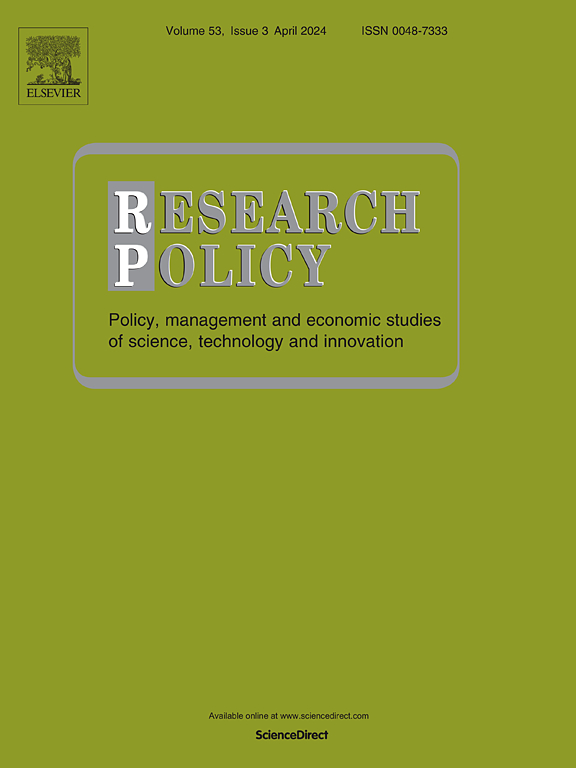From virtuous to vicious cycles – towards a life cycle model of technology deployment policies
IF 8
1区 管理学
Q1 MANAGEMENT
引用次数: 0
Abstract
The management of sustainability transitions often includes action to accelerate technological change. Deployment policies are essential measures to increase the adoption of technologies and spur technological development. However, processes of technological development often follow non-linear pathways, and aligning policy and technological development is challenging. This paper links technological innovation systems (TIS) and their dynamics to the policy feedback framework based on the notion that policies shape future politics. Most significantly, the explicit consideration of TIS processes and progress allows for a more nuanced view of how policy effects turn into feedback and for assessing the co-evolution of TIS and policy over time. This framework is applied to study the case of the German Renewable Energy Act (EEG, 1999–2017). The case study provides evidence that the virtuous cycles of rapid TIS development also increase the odds of growing negative feedback based on rising policy costs, competition within sectors, and increasing technology side effects, opening up windows of opportunity for policy change. Based on these observations, this paper proposes an ideal-typical technology deployment policy life cycle model that describes how TIS, the focal policy, and their context co-evolve in a reciprocal process for the case of the EEG. The discussion sheds light on how deployment policies trigger search processes within the TIS that may encroach national borders to satisfy technology demand. Such search processes fuel political optimism. Rising policy costs and side effects, however, produce policy feedback limiting political leverage. The proposition of a model of how the linkages between policy and technology unfold over time contributes to understanding the timing of policies within sustainability transitions.
从良性循环到恶性循环——走向技术部署政策的生命周期模型
可持续转型的管理通常包括加速技术变革的行动。部署政策是增加技术采用和刺激技术发展的必要措施。然而,技术发展的过程往往遵循非线性路径,使政策与技术发展保持一致是具有挑战性的。本文基于政策塑造未来政治的概念,将技术创新系统及其动态与政策反馈框架联系起来。最重要的是,明确考虑TIS过程和进展,可以更细致地了解政策影响如何转化为反馈,并评估TIS和政策随时间的共同演变。该框架用于研究德国可再生能源法案(EEG, 1999-2017)的案例。案例研究提供的证据表明,交通运输技术快速发展的良性循环也增加了基于政策成本上升、部门内竞争和技术副作用增加的负面反馈不断增加的可能性,为政策变革打开了机会之窗。基于这些观察,本文提出了一个理想典型的技术部署策略生命周期模型,该模型描述了在EEG的情况下,TIS、焦点策略及其上下文如何在一个互惠的过程中共同进化。讨论揭示了部署策略如何触发TIS内部可能侵犯国界以满足技术需求的搜索过程。这样的搜索过程助长了政治上的乐观情绪。然而,不断上升的政策成本和副作用会产生限制政治杠杆的政策反馈。关于政策和技术之间的联系如何随着时间的推移而展开的模型的提出有助于理解可持续性转型中政策的时机。
本文章由计算机程序翻译,如有差异,请以英文原文为准。
求助全文
约1分钟内获得全文
求助全文
来源期刊

Research Policy
MANAGEMENT-
CiteScore
12.80
自引率
6.90%
发文量
182
期刊介绍:
Research Policy (RP) articles explore the interaction between innovation, technology, or research, and economic, social, political, and organizational processes, both empirically and theoretically. All RP papers are expected to provide insights with implications for policy or management.
Research Policy (RP) is a multidisciplinary journal focused on analyzing, understanding, and effectively addressing the challenges posed by innovation, technology, R&D, and science. This includes activities related to knowledge creation, diffusion, acquisition, and exploitation in the form of new or improved products, processes, or services, across economic, policy, management, organizational, and environmental dimensions.
 求助内容:
求助内容: 应助结果提醒方式:
应助结果提醒方式:


